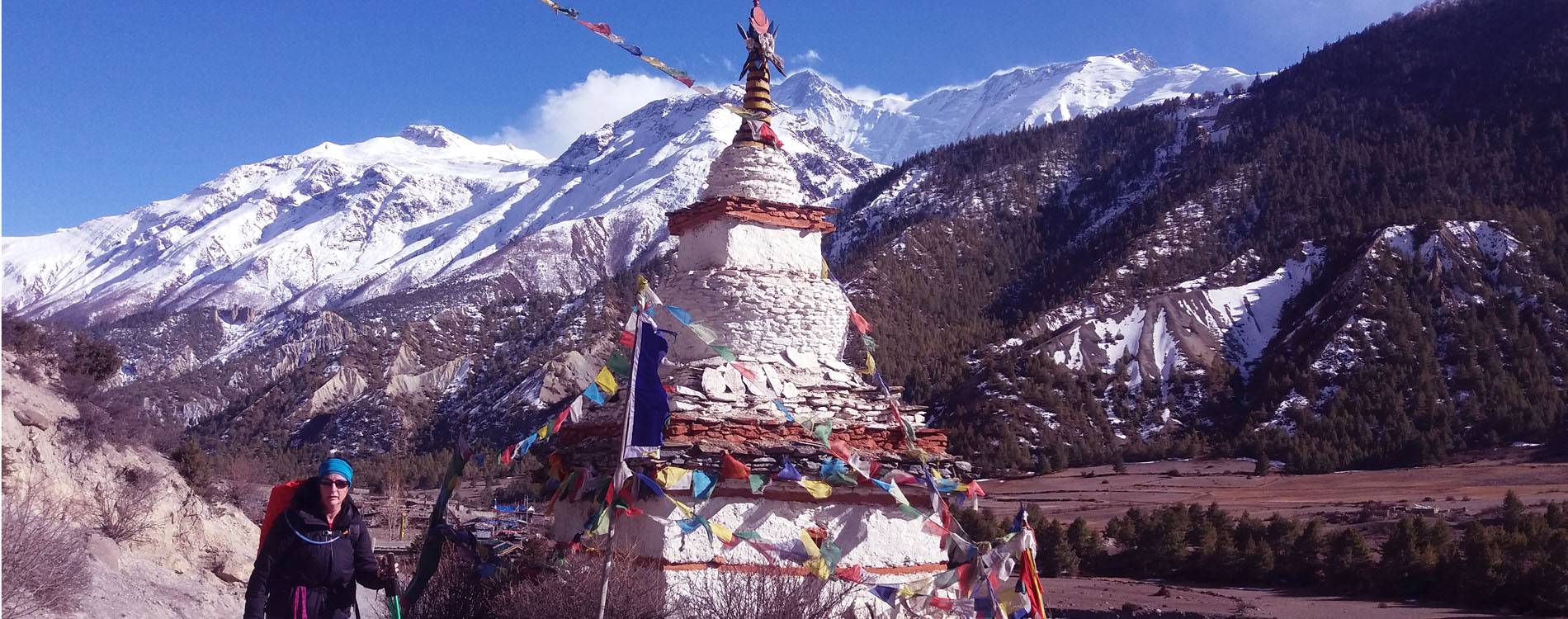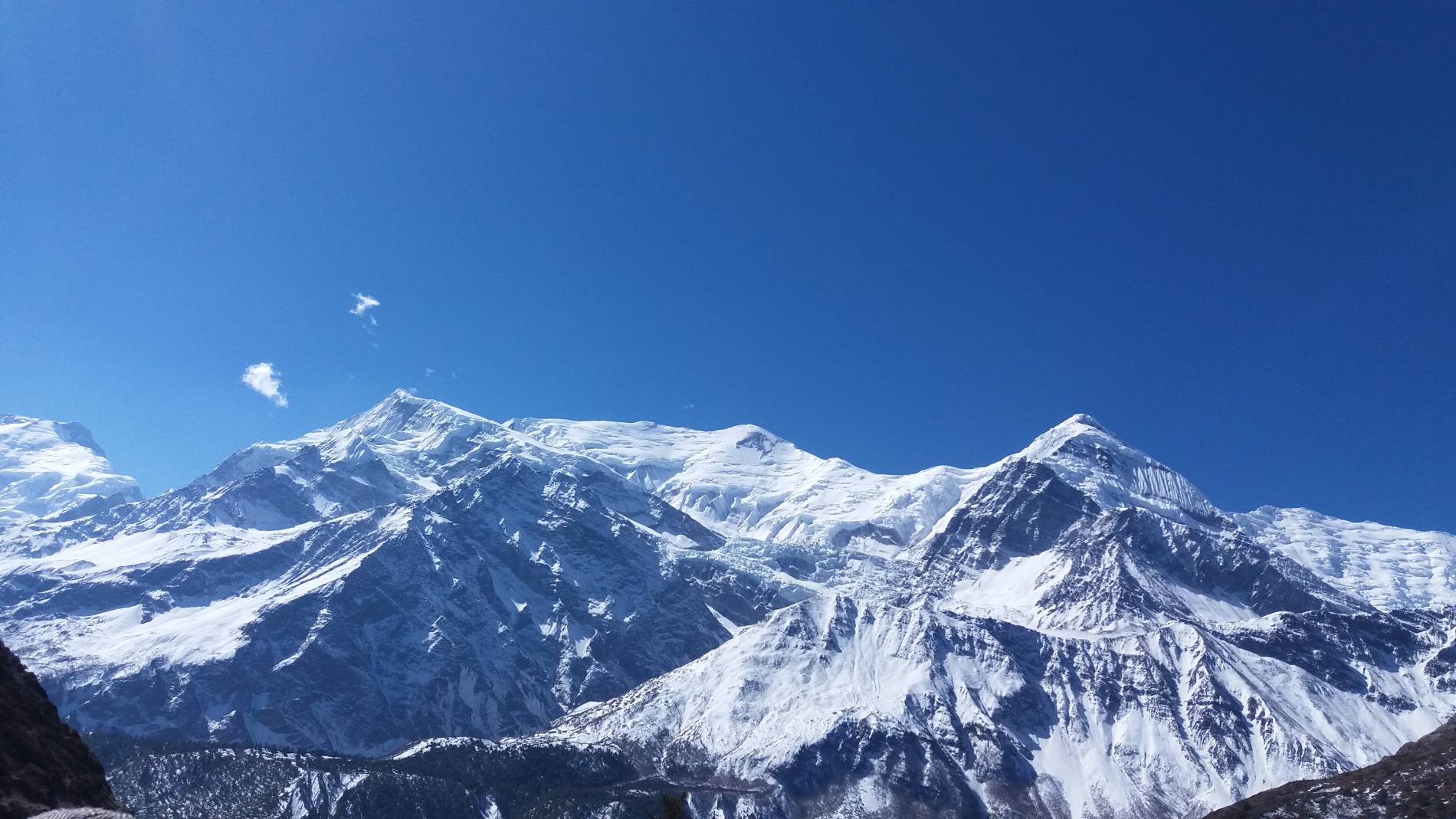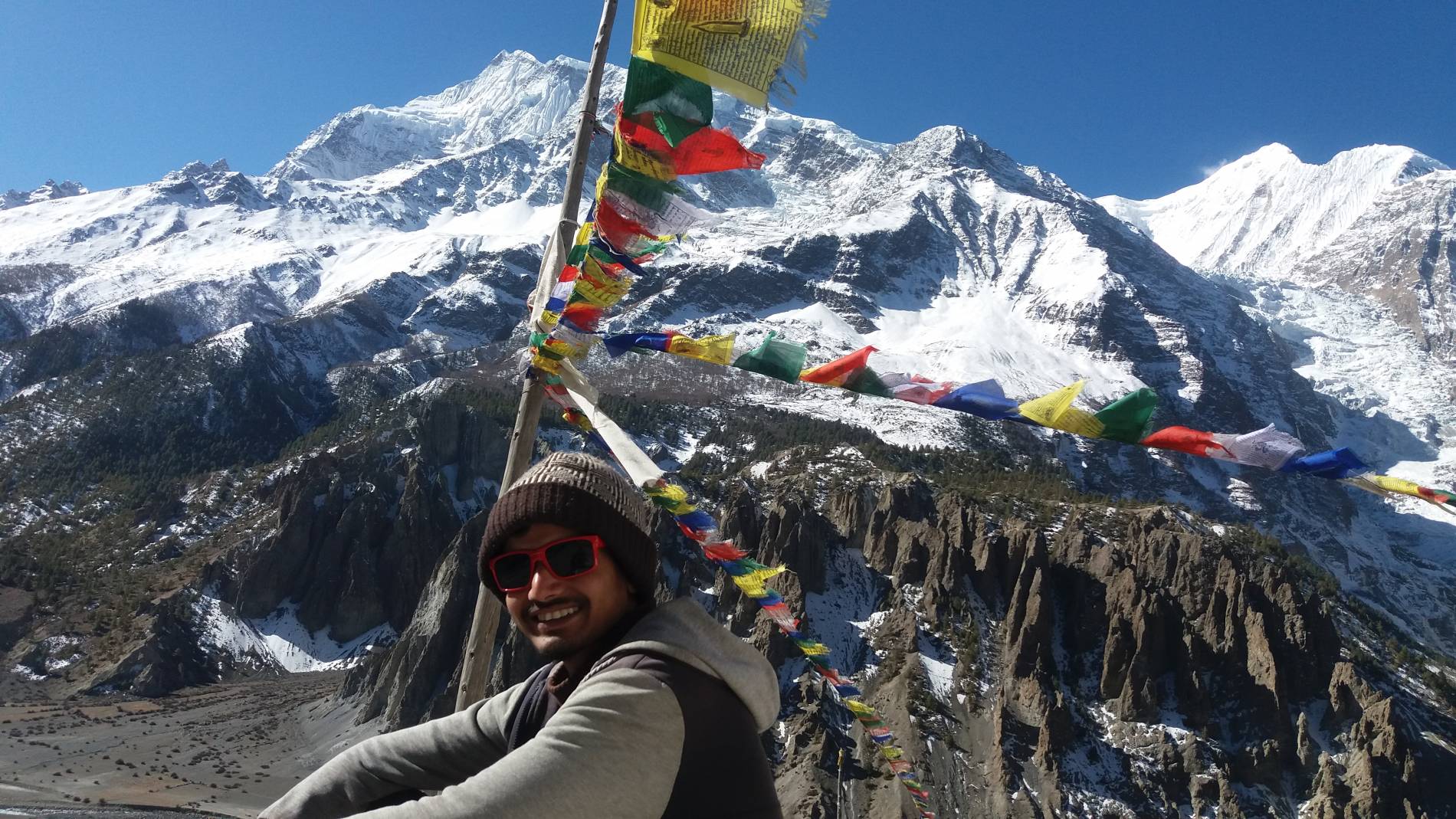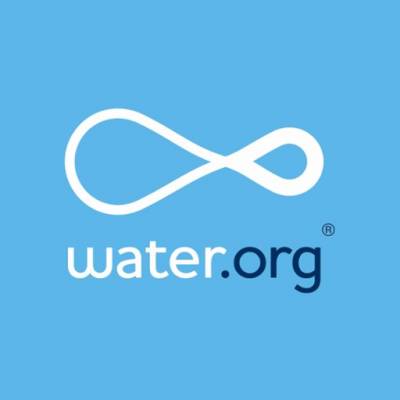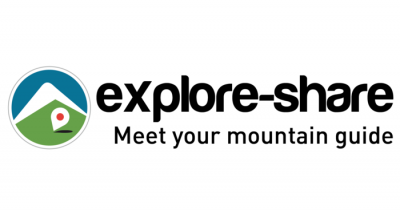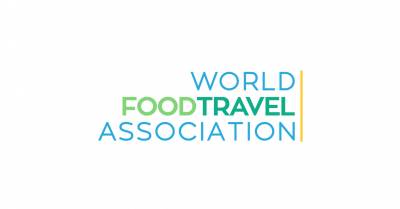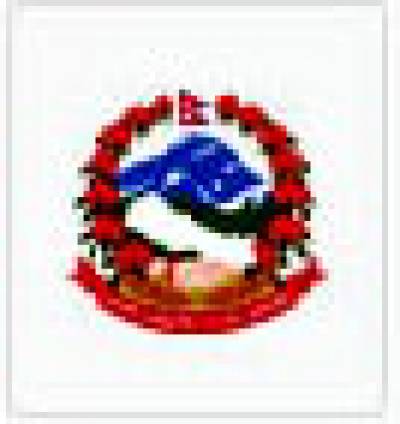12 DAYS ANNAPURNA CIRCUIT TREK
This classic 12 Days Annapurna Circuit Trek is one of the most popular treks in Nepal. Every year thousands embark on this adventure and return with memories to last a lifetime!
On this trek you circle the gigantic Annapurna massif crossing two valleys, traverse Thorong La Pass and follow the trail for between160 to 230 km.
Our trek starts at Besisahar alongside the Marsyangdi River and takes you to its source just beyond Annapurna. We then head to Manang and later cross Thorong La Pass (5416 m). We pass through many historic and culturally rich villages along the route and then climb to Poon Hill for a birds-eye view of the surrounding peaks, a spectacle that will leave you breathless. perspective. Leaving Poon Hill we descend back to Pokhara.
You can expect to see along the trail the massive snow-capped peaks of Annapurna II, Annapurna III, Lamjung Kailas, and Annapurna South. Besides the giants, you will also view Tilitso Himal, Machapuchare, Dhaulagiri, Tukuche Ri, and Nilgiri South. One of the main features of this trek is being exposed to the unique cultures of various villages and their enduring lifestyles high in the mountains, such as the Gurung, Tamang, Sherpa, Magar, and Thakali people. Many of these villages have age-old Buddhist an Hindu temples.
Your guide will take you through rhododendron and Cyprus forests, across many suspension bridges, point out the unique fauna and flora as you go, and ensure that you get the most rewarding experience to be had in this region.
Features of 12 days Annapurna Circuit Trek
- An escape to remote and rugged regions off the beaten track among the unique vegetation such as sub-tropical forests and alpine rocky wastelands.
- Jaw-dropping views of these massive peaks - Annapurna, Lamjung Himal, Dhaulagiri, and Nilgiri.
- Stop and chat at many quaint teahouses and admire the local culture.
- Cross the high-altitude Thorong La Pass (5416m).
- Visit Muktinath Temple and other sacred and religious places.
- Witness the unusual and distinct architecture and people of Braga, Manang, Kagbeni, Jomson, and Marpha.
- An early morning sunrise view of Annapurna from Poon Hill. (Have your camera ready and charged!)
- A dip in the therapeutic hot springs at Tatopani. (a great way to relax aching muscles)
ITINERARY
Day 1 : Drive to Besisahar (760m/2,493 ft) and trek to Bhubhule (840m/2,756 ft) Duration: 7-8 hours.
Your guide will collect you from your hotel and then together we take a 7 to 8-hour drive to Bhulbhule. You will have time to get accustomed to the Nepal countryside before reaching Bhulbhule, located on the banks of the Marsyangdi River where we stay the night. Breakfast & dinner included.
Day 2 : Trek to Chamje (1,410m/4,626 ft) Duration: 6-7 hours.
Today we begin in earnest with a 7-hour trek. As we begin our trek we will follow along the left bank of Marsyangdi River slowly ascending towards Chamje. Following the fairly easy trail, we get to see streams cascading into the river and pass through several small villages with their unique culture, history, and architecture. We continue until we reach the tiny village of Ngadi next to the Marsyangdi River. We will cross the suspension bridge over Marsyangdi River following the trail along the left bank before reaching our lunch stop at Syange. After lunch, we trek for one hour to Chamje where we stay the night. Breakfast, lunch & dinner included.
Day 3 : Trek Chamje to Bagarchhap (2,160m/6,922ft) Duration: 5-6 hours.
Leaving Chame we pass through rhododendron, pine, and bamboo forests and follow the trail through the valley before arriving at Tal and its cultivated farm plots of wheat, potatoes, and other grains. After passing through Dharapani we head in a westerly direction via fir and pine forests until we reach Bagarchhap where we stay the night. Today’s trek is of around 7 hours. Breakfast, lunch & dinner included.
Day 4 : Trek from Bagarchhap to Chame (2,650m/8,694 ft) Duration: 5-6 hours.
From Bagarchhap we continue to the village of Danaque before climbing higher where we are offered magnificent views of Manaslu (8163m), Annapurna, and other towering peaks. Our trek takes us through several Tibetan villages, such as Thanchowk, Kolo before reaching our destination, Chame. Breakfast, lunch & dinner included.
Day 5 : Trek to Pisang (3,240m/10,629ft) Duration: 4-5 hours.
After leaving Chame we pass through Telekhu and along the trail have some breathtaking views of Annapurna and Pisang (6091m) until we have to re-cross on a suspension bridge to the south bank of the Marsyangdi River. After crossing the river we t head higher passing a pine-forest as we trek through the upper reach of the Manang valley to Pisang. Tonight we stay at Pisang. Today’s trek is around 7 hours. Breakfast, lunch & dinner included.
Day 6 : Trek from Pisang to Manang (3,540m/111,614 ft) Duration: 7-8 hours.
The town of Pisang is the start of our trek in the upper Manang area. Today we head to Braga; a Tibetan village with its unique architecture with houses constructed one upon the other. One of its main attractions is its Gompa, the largest in the Manang region. Manang is popular with trekkers and is also a place to acclimatize before heading to higher altitudes. Today’s trek is a big one at around 8 to 9 hours. We stay here for the night. Breakfast, lunch & dinner included.
Day 7 : Acclimatization day at Manang.
Medical professionals recommend that before heading to higher elevations that trekkers spend some time acclimatizing. They also recommend staying active. Today we will climb up to Khangsar (3756m) as a way to further help us acclimatize. Overnight stay at Manang. Breakfast, lunch & dinner included.
Day 8 : Trek from Manang to Yak Kharka (4,120m/13,517 ft) Duration: 4-5 hours.
Today we head off on a 10.4 km uphill trek to Yak Kharka passing through juniper forests and may see yak grazing in the pastures. On the route, we pass the only teahouse at Thorong Khola. Depending on the conditions we may decide to go a little further and stay the night at Letdar. Today’s trek is about 5 hours. Breakfast, lunch &dinner included.
Day 9 : Trek from Yak Kharka to Thorong Phedi (4,560m/14,960 ft) Duration: 3-4 hours.
Climbing higher we gradually get used to the higher altitude. We follow the east bank of the Jarang Khola and along with the trail view steep bluffs before reaching Thorong Phedi (meaning foothills). We can also trek for one more hour to High Camp (4800m). If we are lucky we may see the famous blue sheep and even a snow leopard! This is also home to Lammergeyer (bearded vulture). There is also a belief the mythical griffons are in this region! Breakfast, lunch & dinner included.
Day 10 : Cross Thorong La Pass (5,416m/117,769 ft) to Muktinath (3,802m/12,474 ft) Duration: 7-9 hours.
Today is most likely the toughest day of the trek, hiking for around 7-8 hours. The higher altitude contributes to the degree of difficulty and sometimes strong winds in these upper regions. Along the trail, we may pass sheep, yaks, and merchants transporting their goods. Once we reach Thorong La Pass we will be rewarded with breath-taking views of Annapurna, Gangapurna, and the eye-catching peak of Khatungkang (6484m). Leaving the pass we descend around 1600 meters and the brilliant Dhaulagiri (Dhaula Giri, meaning “White Mountain”) is the highest mountain that is entirely in Nepal. The trail is more undulating and relatively easy before we reach Muktinath where we stay the night after a 10-hour trek. Breakfast, lunch & dinner included.
Day 11 : Drive from Muktinath to Pokhara (850m/2788 ft) Duration: 7-9 hours.
Today we head back to Pokhara, an approximate 9-hour Bus/share jeep trip from Tatopans via Beni Bazaar. Pokhara is famous for its lakeside and relaxed atmosphere where tourists can unwind, enjoy modern bakeries, bars, and cafes. Of course, there are many shops where you can buy last-minute souvenirs. Tonight you can sit back and relax at your lakeside hotel over a few drinks, reminiscing and sharing the highs and lows of your trek.
Day 12 : Drive back to Kathmandu (1,350 m/4,450 ft) Duration: 6-7 hours.
Today we head back on a 6 to 7 hour drive to Kathmandu with many fond memories of Nepal and its unique culture and geography. These memories will last a lifetime!
SERVICES
Costs included in your package.
- Three meals a day (Breakfast, lunch, and dinner) during the trek.
- Fresh fruit every evening after dinner.
- Trekking Lodge (Tea House) accommodation during the trek.
- Annapurna Conservation Area Project (ACAP) entry permit & Tourist Information Management System (TIMS) permits
- A highly experienced, helpful, knowledgeable, friendly, English speaking well trained, Government license holder guide with all his salary, food, drinks, accommodation, transport and insurance.
- Bus to Bhulbule and again the tourist bus from Pokhara to Kathmandu.
- Public Bus from Muktinath to Pokhara
- Strong, helpful Sherpa porters with proper safety equipment and walking equipment, his salary, food, accommodation, and insurance (one porter for two people).
- Comprehensive medical supplies (first aid kit will be available).
- Arrangement of emergency helicopter service (paid by your Travel Insurance Company).
- Use of sleeping bag, down jacket, duffel bag and walking poles (if you don’t have your own, to be returned after trip completed).
- Sherpa Expedition and Trekking T-shirt
- Government taxes and official expenses.
- Trip achievement certificate after successful trip completion.
- Oxygen meter to check your pulse and oxygen saturation and heart rate twice daily (Very useful to check Altitude Mountain Sickness(AMS) symptoms) which will ensure your health during the trek.
- Assistant guide for groups of 8 or more people.
Costs Exclude
- Meals whilst you are in Kathmandu & Pokhara- lunch, and dinner.
- Nepal entry visa fee (easy to obtain the visa on arrival at Tribhuvan International Airport – Kathmandu). $30 USD for 15-day, $50 USD for 30 Days, and $125 USD for 90 Days visa.
- Personal travel and medical insurance.
- International airfare.
- Your personal expenses.
- All the alcoholic and nonalcoholic, soup, tea, coffee, hot chocolate, cocoa, mineral water, extra food, cold and hot drinks on trek ( i.e. those you choose to purchase along the way and during evenings in the tea houses)
- All desserts & sweet things like chocolate, cake, pie, pudding.
- Hot shower and battery charging at the tea houses.
- Tips for the guide, porter, and driver (tipping is expected)
- NOTE: If you return earlier from the trek due to sickness or any problem, the money you paid for the flight, hotel, mountain room, food, etc. is nonrefundable, and you will need to bear the expenses for the hotel, food, etc. in Kathmandu yourself.
EQUIPMENTS
The following information will give you some idea about what you need to bring for the trek. It is important you do not forget the essential items, as this will determine your comfort and safety on the trek. Equally important is that you do not burden yourself with unnecessary equipment on the trek.
General
- All season sleeping bag and down Jacket (we can provide if you need it, but has to be returned after the trek)
- Duffle bag ( Sherpa Expedition & Trekking provide duffle bag during the trek but has to be returned after the trek)
- A wind and waterproof thin layered jacket (a must-have for morning and evenings above 3,000m)
- Daypack
Upper Body- Head / Ears / Eyewear
- A pair of half gloves
- A warmer hat that covers the ears
- Sunglasses
- Neckwarmer
- Sunscreen (35 to 60 SPF)
- Headlamp and an extra set of batteries
Hands
- A pair of half gloves for walking poles(if you prefer)
- Warmer shell gloves and liner
Upper Body
- long sleeve t-shirts
- Thermal tops
- wool jacket or pullover
- Sports bras for women and girls
- Water and windproof shell jacket
Lower Body
- Thermal underwear (especially trousers)
- windproof and waterproof trousers
- warmer trousers
- Comfortable trekking pants
- Extra casual sport pants
Footwear
- A pair of good waterproof trekking boots
- Pair of sandals
- 4-5 pairs of woolen socks
- Sock liners
- Light shoes and sneakers
- First Aid Kits and Medicines
- Assorted adhesive bandages (fabric preferred)
- Blister treatment cream or similar
- Insect / anti-itch ointment
- Ibuprofen or other pain-relief medication
- Diamox (125mg to 250mg tablets for altitude sickness)
- Warps, splints, and wound coverings butterfly bandage
- Water purifying pills
(Note our company guide will carry the medicines and first aid kits during the trek. However, we recommend you bring your personal first-aid kit as well)
Miscellaneous - but must useful on the trek
- 4 passport size photos with original passport
- Water bottle & filter
- Flight details (please make a copy and leave one pic at our office in KTM because in case you want to change your flight date)
- Bathroom kit (conform, should be included toilet paper, plastic bags, hand wipes, towel, and soap, etc.)
Extra things
- Comfortable trekking poles
- Quality energy dry foods (up to you)
- Power bank and music players
- Camera (memory card, chargers, and extra batteries)
GOOD TO KNOW
Accommodation
You will be accommodated in 3-star hotels in Kathmandu. During the trek, we will be staying at lodges/ teahouses. You may find comfort and better quality teahouses - having attached bathroom at lower levels- until you reach higher elevations, where the accommodation is more basic with bare necessities.
Meals during the trek
In Kathmandu, your hotel includes breakfast, whereas all meals (breakfast, lunch, and dinner) will be provided during the trek. A staple food of the Manang & Mustang regions is potatoes, oats, buckwheat, Sherpa stew, and Tibetan bread. Sherpa’s’ started farming potatoes when the first seeds were introduced to the region in the early 90s. There is a limited choice of food at higher elevations and except many potato dishes. Potatoes are high in carbohydrates – an excellent source of energy needed at high altitudes.
Transportation
We use a private car for sightseeing and for the airport to hotel pick and drop off. We use public transportation or local buses during the trek.
Physical fitness
This can be a challenging trek where you often have to walk 6-7 hours a day. You need past experience of hiking or trekking but if you have done any kind of trekking activities then it is always a plus! We have met people from all walks of life, shapes, and sizes who have completed the trek. The only difficult part is when altitude sickness strikes and the effect that it can have on your body. Before leaving for Nepal it is good if you can prepare yourself physically by increasing your stamina and oxygen intake.
Remember – The better prepared – the more enjoyable your trek!
MAP
PHOTOS/Videos
Departures
Select a departure month
Fill out the form below and a Travel Expert will reach out to create your perfect tour.
FAQS
I have never hike before, can I make it to Annapurna Circuit?
Yes, you can. No matter who you are, as long as you are reasonably fit, can walk for 5-6 hours a day and trek/hike a few uphill, Sherpa Expedition and Trekking team will support you to the fullest to transform your dream of standing at Annapurna Circuit into reality.
What is the best Season for trek to Annapurna Circuit Trek?
The pre-monsoon (February, March, April and May) and post monsoon (late September, October, November and December) are considered the best for the Annapurna Circuit trek as the weather conditions become favorable during this time, providing you with good visibility and a suitable atmosphere for Annapurna Circuit Trekking.
Is there an age limit for Annapurna Circuit Trekking?
No, there is no age limit for the trek to Annapurna Circuit but, you need to be in good physical shape and have a positive attitude. We also suggest you to prior to the excursion though we suggest you to please see your doctor and obtain necessary permission and advice, as well as medications for traveling in extreme altitude prior to the excursion.
What are the meals on the Annapurna Circuit Trekking like?
During trekking, you will be served meals in the teahouses. Typical meals are noodles, rice, pasta or potato dishes along with vegetables and egg/chicken/meat dishes. Other items mostly served as breakfasts include egg, pancake, bread, porridge, muesli, and toasts with peanut butter and honey.
What kind of accommodation will be provided during the Annapurna Circuit Trekking?
A teahouse trekking accommodation will be made for you for the Annapurna Circuit Trekking whereby you will be able to stay at tea house (Local lodge) and have wholesome food and neat and clean comfortable bed throughout your trekking journey. This form of arrangement also allows you to carry less baggage; you can trek at your own pace and enjoy the Annapurna panorama on your own schedule. It is also an eco-friendly way of trekking whereby trekkers can have more contact with the local people.
Are there toilet facilities at the tea houses? What opportunities will I have for shower during trekking?
Most of the teahouses on the Annapurna Circuit trail have squat toilet facilities but recently built lodges have western-style toilets as well. Nowadays, flush toilets are also being introduced with number of increasing foreign mountaineers each year. It is highly recommended to carry your own toilet paper and other required toiletries. Hot shower facilities are available. The most common type is a bucket shower, usual buckets with tap filled with hot water and placed in a shower room. Hot shower costs from US$ 2 to 5 per use and the price increases along with the elevation. Attached bathrooms and toilets are not available unless you book for a luxury lodge during the Annapurna Circuit trek.
What kind of clothes do we require for the trekking and is it possible to purchase it in Kathmandu before the start of the trip?
What you want to wear depends on you but we suggest you wear warm clothes during the Annapurna Circuit Trekking. A down jacket, thermal longs and top, comfortable trekking trousers, t-shirts, fleece, windproof jacket, hat, scarf, and gloves might be useful. There are numerous trekking shops in the Thamel area of Kathmandu where you can get all of these items in both local and branded stores alike. Sherpa Expedition and Trekking may also accompany and assist you if required.
Do I need to bring any bags for trekking? If yes, what kind?
During the Annapurna Circuit Trekking, you will be on a long journey for which you will need two bags to keep your belongings. A rucksack/duffle bag and a day bag for personal items. Sherpa Expedition and Trekking will provide you with a duffle bag (which is need to refund after the trek) that you can use throughout your entire journey and even afterward. These bags are durable and hence perfect for any kind of trekking journey. While the duffle bag will be carried by the potters, you will have to carry a day bag on your own. A day bag is a small backpack that has enough room for everything you will need on a day hike such as lunch, water, extra clothing and perhaps a few personnel items like camera, battery chargers, etc.
Do I need to bring any personal equipment like sleeping bags, down jackets, Trekking poles etc?
If possible, we suggest you bring your own equipment. However, sleeping bags and down jackets will be provided to you by Sherpa Expedition and Trekking. With regards to trekking poles, if you are used to walking with it then take them with you, as you will probably find them useful especially on the way down. They are not essential though and the walk is manageable without them. It is mostly a personal preference. If you prefer to take the trekking poles with you on the trekking then you can either bring your own pole or buy it from numerous options available in Kathmandu itself.
Is it possible for me to store extra clothing that I will not need?
Yes, if you have a bag of extra clothing for when you return from the trekking, you will be able to store it safely in Kathmandu Sherpa Expedition and Trekking office. The storage facility is provided by most hotels and lodges in Kathmandu or you can also store it in our office for the duration of the trekking.
What problems can arise on high altitude?
Our itinerary has been specially tailored to prevent any kind of AMS (Acute Mountain Sickness) while moving up to higher altitudes. Normally, altitude sickness starts from 3,600 meters and above. You will be trekking at a relatively slow and gradual pace as part of the acclimatization process. Cut off caffeinated, alcoholic and smoking items. Drink at least 4 liters of water a day. Trek slow. Don't skip the acclimatization days. Better to continue with Diamox (if any symptoms show up). Drink Garlic Soup. In the higher elevation, there is less oxygen in the air and this is more so while crossing high passes. Our expert guides will advise you on how to avoid AMS and treat it when/ if required.
Do I need insurance for Annapurna Circuit Trekking?
Make sure to have both medical and evacuation insurance before coming to Nepal for Annapurna Circuit Trekking. You should be careful in choosing a policy while traveling to a Himalayan country like Nepal as some insurance companies may make special exceptions for adventure travel. If you are confused about the insurance, please inform us and we will help you. It is usually better to arrange your insurance in your country before travel.
How long do I need to walk per day during my trek to Annapurna Circuit?
The trekking will be 5-7 hours a day depending upon the landscape and destination.
How long will it take to reach Annapurna Circuit?
It takes 4 to 22 days to reach Base Camp depending upon the mode of transportation and packages of Sherpa Expedition and Trekking offers.
How safe is Annapurna Circuit Trekking?
We at Sherpa Expedition and Trekking Team always have the safety, comfort, and satisfaction of our valued customers as our foremost priority at all times, and we assure you a wonderful and unforgettable time with us in our beautiful country. Sherpa team members of Sherpa Expedition and Trekking will be carrying all the necessary gear, equipment, and first aid kits and they have extensive first aid training. If a trekker falls sick on high altitude, the leader will decide whether to continue the trek. In case of emergency, Sherpa Expedition and Trekking have a rescue helicopter to bring you back from the higher elevation. Moreover, Sherpa Expedition and Trekking also provides oximeter to monitor the oxygen level at high altitude and offers regular health check-up facilities.
What are the mode of transportation?
You can either trek on foot or by a flight. Sherpa Expedition and Trekking offer exciting and reasonable flight to Pokhara for 4 days and 19 days. Sherpa Expedition and Trekking can also customize your tour as per your necessity.
What if my flight to and from Pokhara is cancelled or delayed?
The flights are usually regular between September and May. But due to high altitude, bad weather and unforeseen technical issues, you may experience a delay or cancellation of the flight. On the occurrence of such events, Sherpa Expedition and Trekking tourist bus will be arranged.
What is the luggage limit for porter and flight to Pokhara?
Sherpa Expedition and Trekking will provide one porter for two trekkers to carry 20 kgs of luggage (maximum 10 kg for each trekker). Please be sure your porters are not overloaded because they do not carry only your equipment but also lift your spirit to reach new heights, and your love, affection, and generosity can be the reason for them to work hard to take you to your destination. However, the weight limit on flights to the Annapurna region, basically to Pokhara is a total of 20 kgs including hand bag and you need to pay an extra amount per kg for the excess baggage. Sherpa Expedition and Trekking pays up to 5 kgs of extra baggage making your total to 20 kgs with your hand bag.
What types of liquid do I need to drink at high altitude?
Garlic soup is a must while trekking. Sherpa Expedition and Trekking recommend trekkers to drink green tea, lemon tea, hot lemon ginger tea and drink at least 2-4 liters of water a day. However, it is better to avoid alcohol and alcoholic beverages, caffeinated items, and hot-chocolates at high altitude.
I am a vegetarian. Am I supposed to get enough meal on my trek?
Sherpa Expedition and Trekking won’t recommend non-veg items because the meat in such places may not hygienic and healthy. Sherpa Expedition and Trekking also encourage to avoid dairy and cheesy items and strongly suggest not to consume them during the trek. So, our packages are suitable for both vegan and vegetarians.
Do I need to tip my porter and guide?
Your guide and porters are a big reason why you got a chance to feel something very few can have. Apart from guiding and carrying your necessities and being mindful of your safety, they want to see you happily succeeded more than anyone like family and help you successfully complete the trek safely. So, your tips reflect gratitude towards them. So, tipping is a recommended culture for porters and guide in Nepal as a gesture of thankfulness.
Can I buy the gear in Nepal and sell it afterwards?
Sherpa Expedition and Trekking will introduce dozens of shops selling knock-off gear in Kathmandu. You can also barter those gears at the knock-off places but be sure you keep the receipt safely. Moreover, you can rent the needed gears if you do not want to buy them.
Is there Wi-Fi on the trek?
Yes, most guesthouses offer Wi-Fi, for a small charge. it cost USD$5 per day.
Are there ATMs available during the Annapurna Circuit Trekking?
ATM services are available only in Pokhara & Jomsom. However, the services might not work or run out of cash. Therefore, we suggest you carry a small amount of money to buy snacks, etc during the trekking.
Will I be able to charge my batteries during trekking in the Annapurna Circuit?
Most of the tea houses/ lodges have electricity whereby you will be able to charge your iPod or camera batteries. Please note that lodges/tea houses will charge you some extra money for the services. The fee may vary from 1 USD to 5 USD per hour.
Latest Traveller’s Reviews
Travel experiences of our clients who recently returned from their trips.
100%
Based On 60 Reviews
Urszula Morańda
United Kingdom
October 23, 2024
Professionalism at Its Best
Sherpa Expedition & Trekking demonstrated professionalism at every stage of the Annapurna Circuit Trek. From the pre-trek briefing to the final goodbye, the team's organization was impressive. Our guides were skilled and experienced, ensuring our safety while encouraging us to embrace the adventure. The trek was well-structured, with plenty of opportunities to appreciate the stunning landscapes and local culture. I felt well taken care of and was able to focus on enjoying the journey. This trek has sparked a passion for trekking, and I’m eager to plan my next adventure.
Wendy Coleman
Canada
October 7, 2024
Incredible Adventure in the Himalayas
The Annapurna Circuit Trek with Sherpa Expedition & Trekking was an incredible adventure in the Himalayas. The guides were fantastic, always ensuring we were well-fed, safe, and enjoying ourselves. They provided valuable insights into the local culture and geography, enriching our experience. The trek itself was challenging but immensely rewarding, with spectacular views at every turn. I also appreciated the small group size, which fostered a sense of camaraderie among trekkers. This journey has left me with unforgettable memories, and I can’t wait for my next trek!
Krzysztof Skwierawski
United States
October 1, 2024
A Trek to Remember
I had an amazing experience trekking the Annapurna Circuit with Sherpa Expedition & Trekking. The guides were knowledgeable and supportive, helping us navigate both the trails and the altitude. The itinerary was well-paced, allowing us to fully appreciate the stunning scenery and local culture. Each day brought new challenges, but the support from our guides made everything manageable. The food was delicious and varied, keeping our energy up for the long hikes. I highly recommend this trek for anyone looking to explore the beauty of the Himalayas.
People Considering This Package Right Now Check availability


